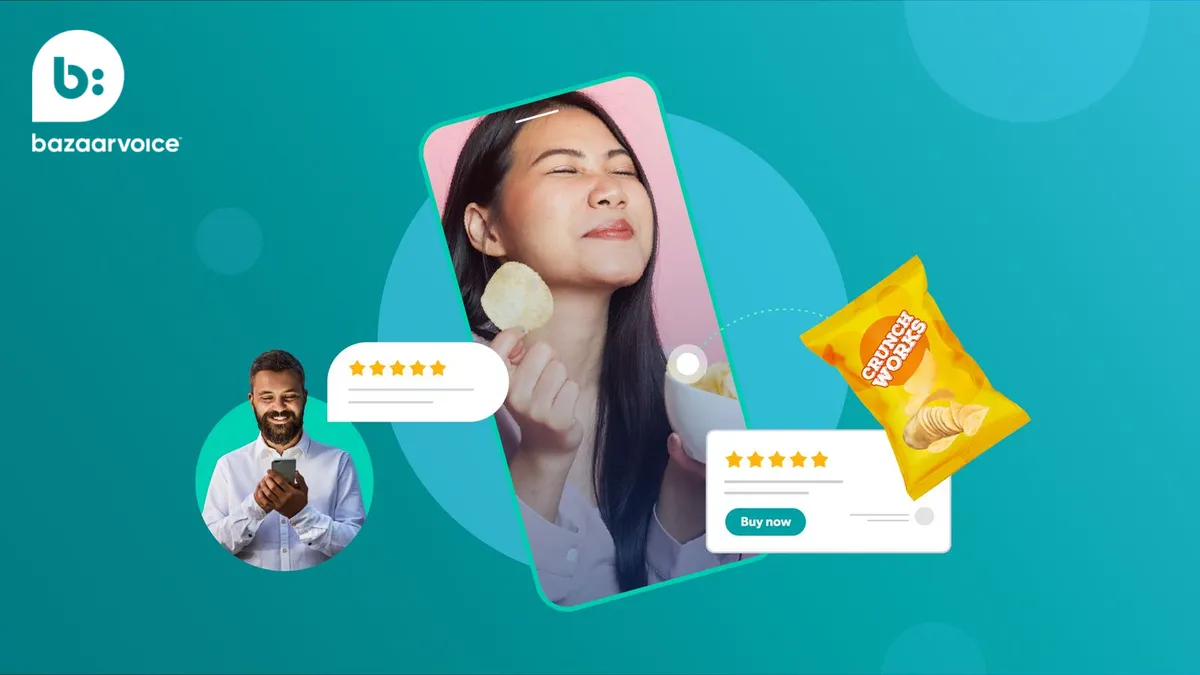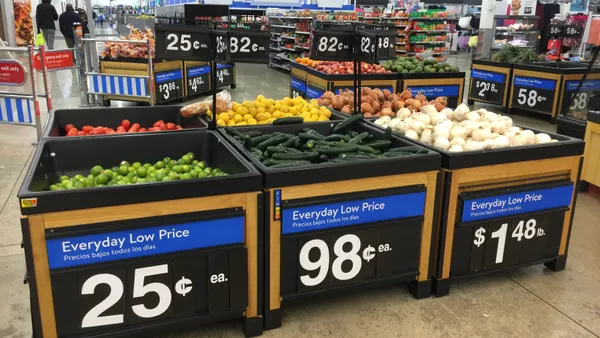Stubborn price increases — after years of runaway inflation — have changed the priorities of shoppers. Today, price is the main driver in consumer purchasing behavior, according to research by technology firm Bazaarvoice, which helps brands and retailers collect and display customer comments and reviews on their own platforms.
“Shoppers are looking for value,” said Alex Kirk, Director of Global Consumer Insights with Bazaarvoice. By polling more than 1,300 shoppers, Bazaarvoice found that 81% of consumers said they needed to be more mindful of cost. It’s a dramatic change from poll results of the past few years: In 2020, availability was king amid tumultuous supply chain issues; in 2021, taste led the way as consumers treated themselves to soothe pandemic anxiety. Now, as the pandemic fades, affordability rules.
“Inflation has changed from being a moment-in-time pain point to something that brands and retailers have adapted to,” said Sam Saez, Vice President, Content Activation Sales. “Consumers might be spending more, but they’re able to get less with their dollar.”
To compete for those dollars, it’s as important as ever for brands and retailers to understand what consumers are looking for and try to meet them where they are. From cutting costs to building trust, here’s what Bazaarvoice research revealed about what modern shoppers want.
- They want to know what other shoppers think.
Is the store clean? Is the produce fresh? Is the experience worthwhile? Does the product taste good? Does an item inspire a meal? Is the price right? Shoppers trust other shoppers for these kinds of insights. “With the rising prices, consumers are spending time learning from their peers and their experiences to help determine which brand is worth their spend,” Kirk said.
The consumer’s willingness to share those thoughts benefits the retailer. Online reviews and social media posts — aka user-generated content — can boost consumer trust and help shoppers make important decisions about where to spend their money. “Feedback from fellow shoppers can have more significance and meaning than a brand's advertising message,” Kirk said. - They’re pinching pennies in distinctive ways.
In today’s higher-price market, shoppers aren’t necessarily buying a product based on a brand name. Instead, they’re looking for value, even if that means going generic. “Fifty-seven percent of shoppers are choosing private label over national or indie brands,” Saez said. “Which means that value for your brand is going to be more important now than ever before.” - They believe that even negative reviews are better than no reviews.
Consumers want to read the good, the bad and the ugly about a business or brand. Bazaarvoice found that 88% of shoppers would rather purchase a product with a mix of negative and positive reviews than a product with no reviews. “If they see all positive, five-star reviews, they might be a little dubious,” Kirk said. “They’ll wonder why no one has anything honest or bad to say.” Plus, she added, negative reviews provide helpful context about product experiences, too. - They want to support authentic brands.
When Bazaarvoice polled its community of shoppers and content creators about how they would like food and beverage brands to engage with them, responses included such adjectives as “relatable,” “transparent,” “authentic,” “value-driven,” “consumer-focused” and “creative.” In other words, shoppers want reality and inspiration, not fantasy or actors. “They’re looking for content that shows them product information, convinces them to purchase by showing it in the context of real people, and inspires them by showcasing how the product fits into their meal routines,” Saez said. - They’re shopping on their phones — even when they’re in a store.
Shoppers are thinking long and hard about where and how they spend their hard-earned cash. “They’re researching on their phones even when they’re shopping in-store,” Saez said. Because of that, she said, it’s important for brands to have information available online to help with discoverability and price comparison and to showcase user-generated content for real-life insights in real time.
The last few years have been tumultuous for consumers and brands alike. But even through changing times, Kirk said, one thing is clear: When retailers listen to their shoppers and deliver what people want, everybody comes out ahead.
One surefire way brands can do that, Kirk said, is to lift consumers’ voices and amplify their words.
“Consumers want to be heard,” she said. “User-generated content is an authentic lens coming from a fellow everyday shopper. It’s important for retailers to think through their strategy of allowing shoppers to share their product experiences and speak to the value of the brand.”
To learn more about how to leverage user-generated content on your own platforms and to connect nearly 8 million shoppers & content creators, visit www.bazaarvoice.com.










